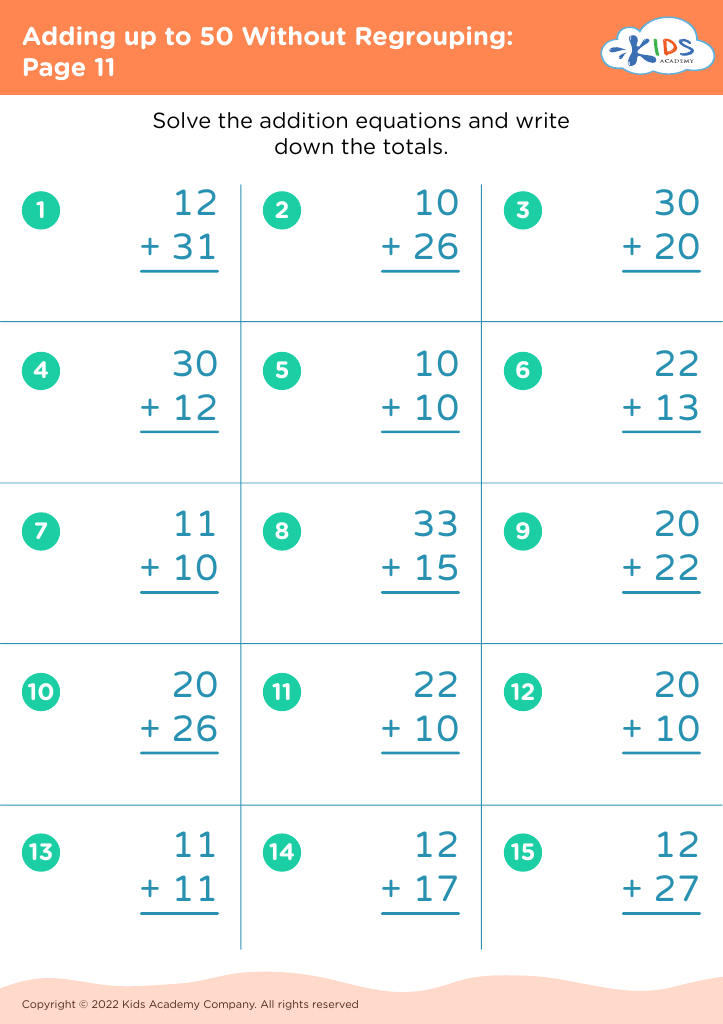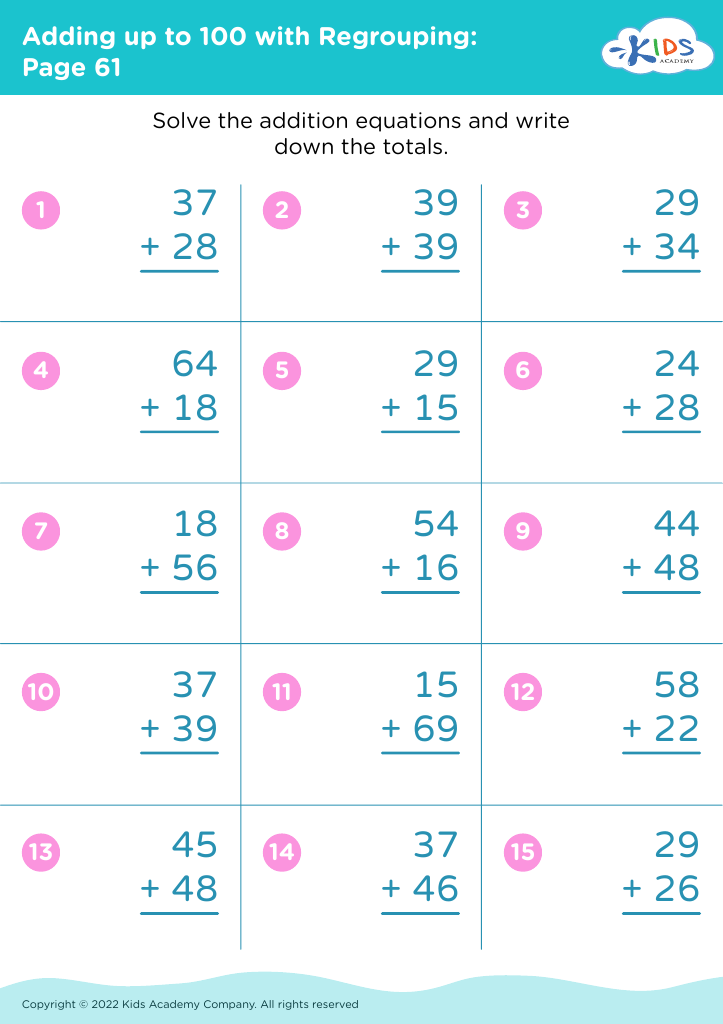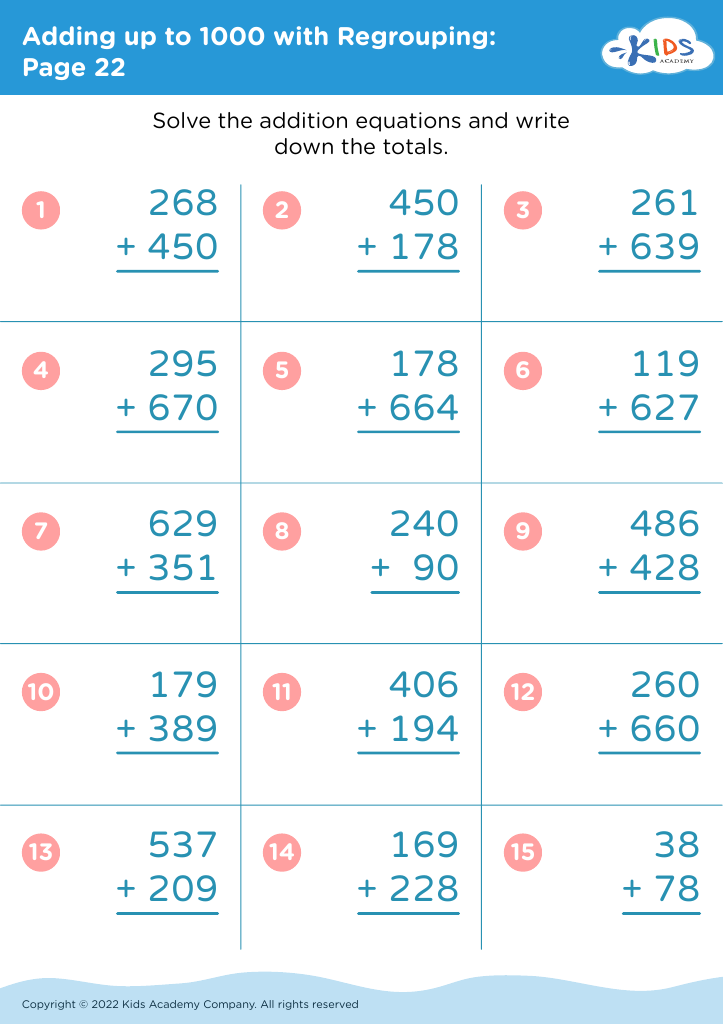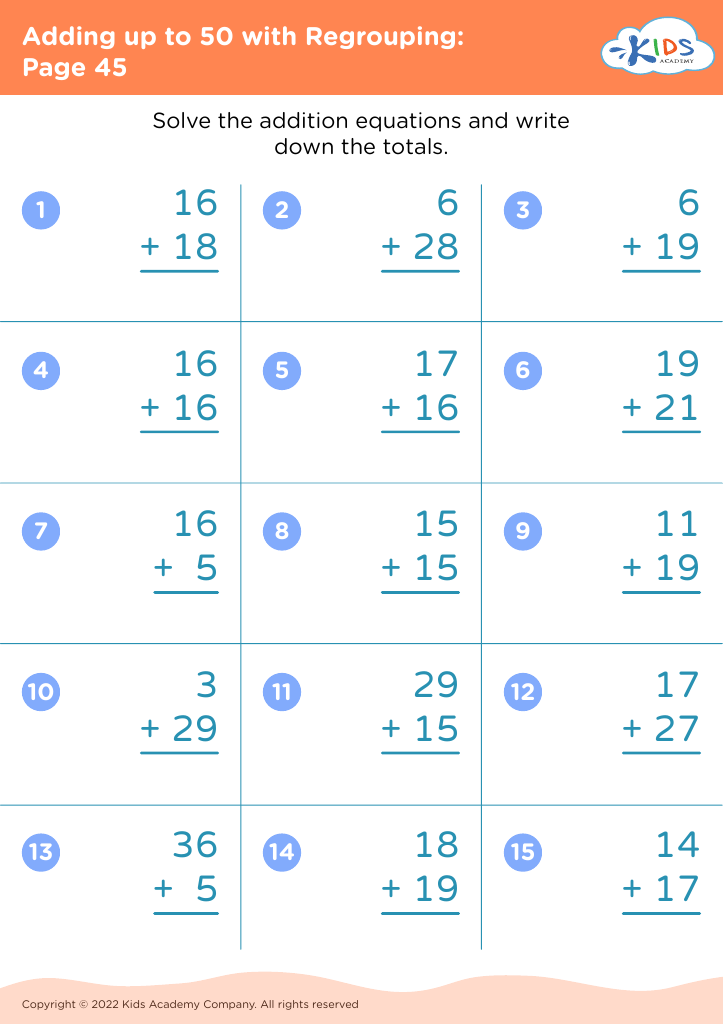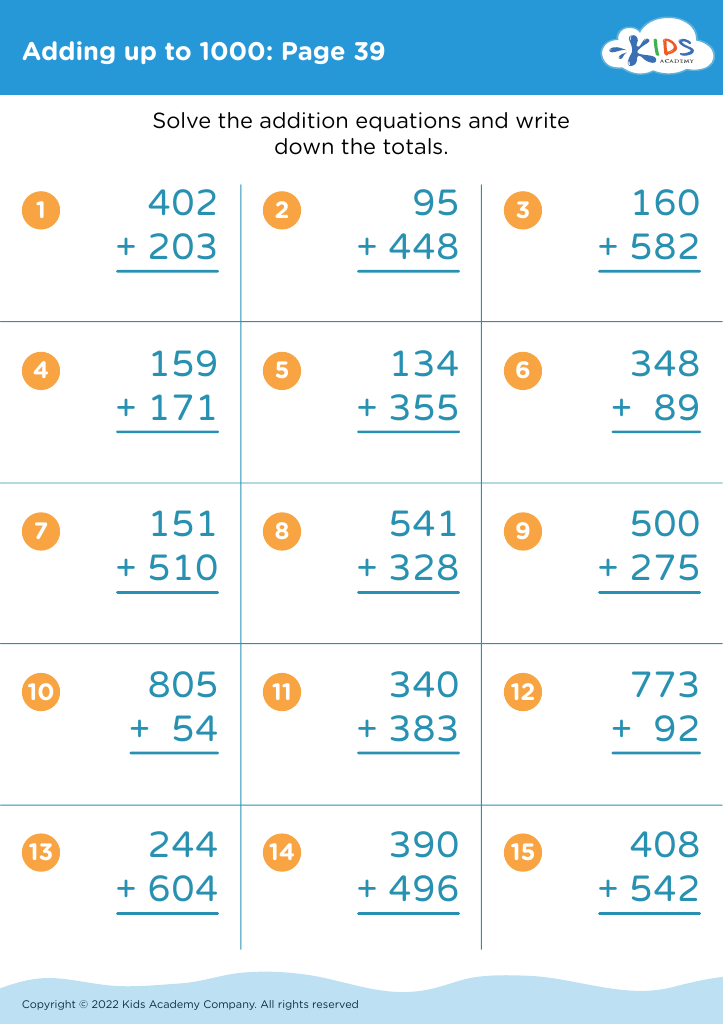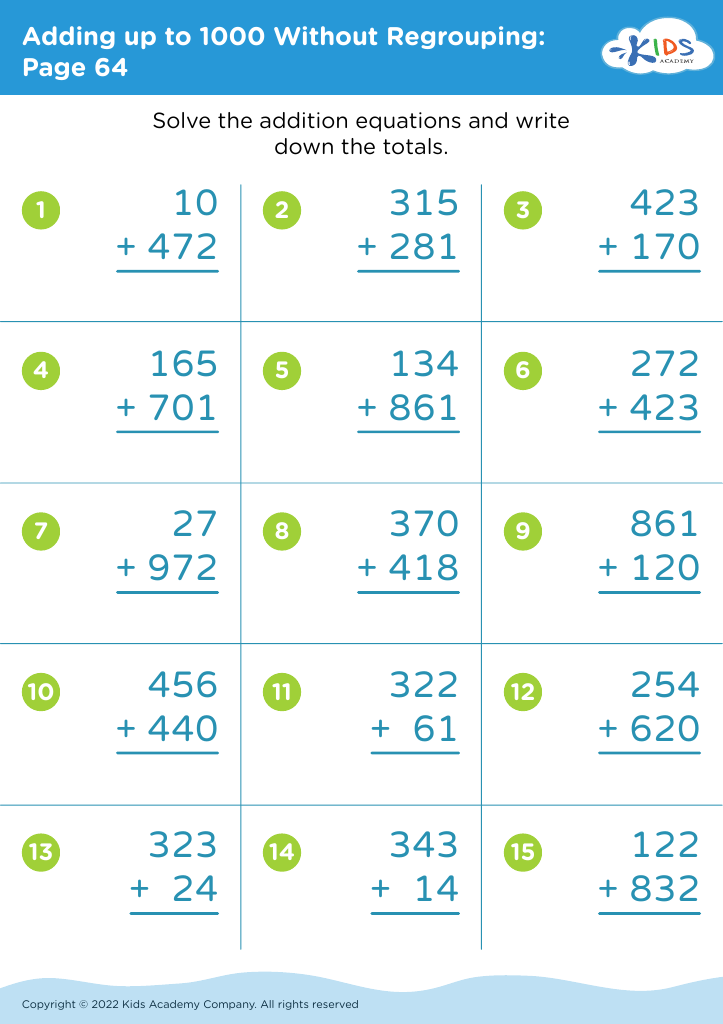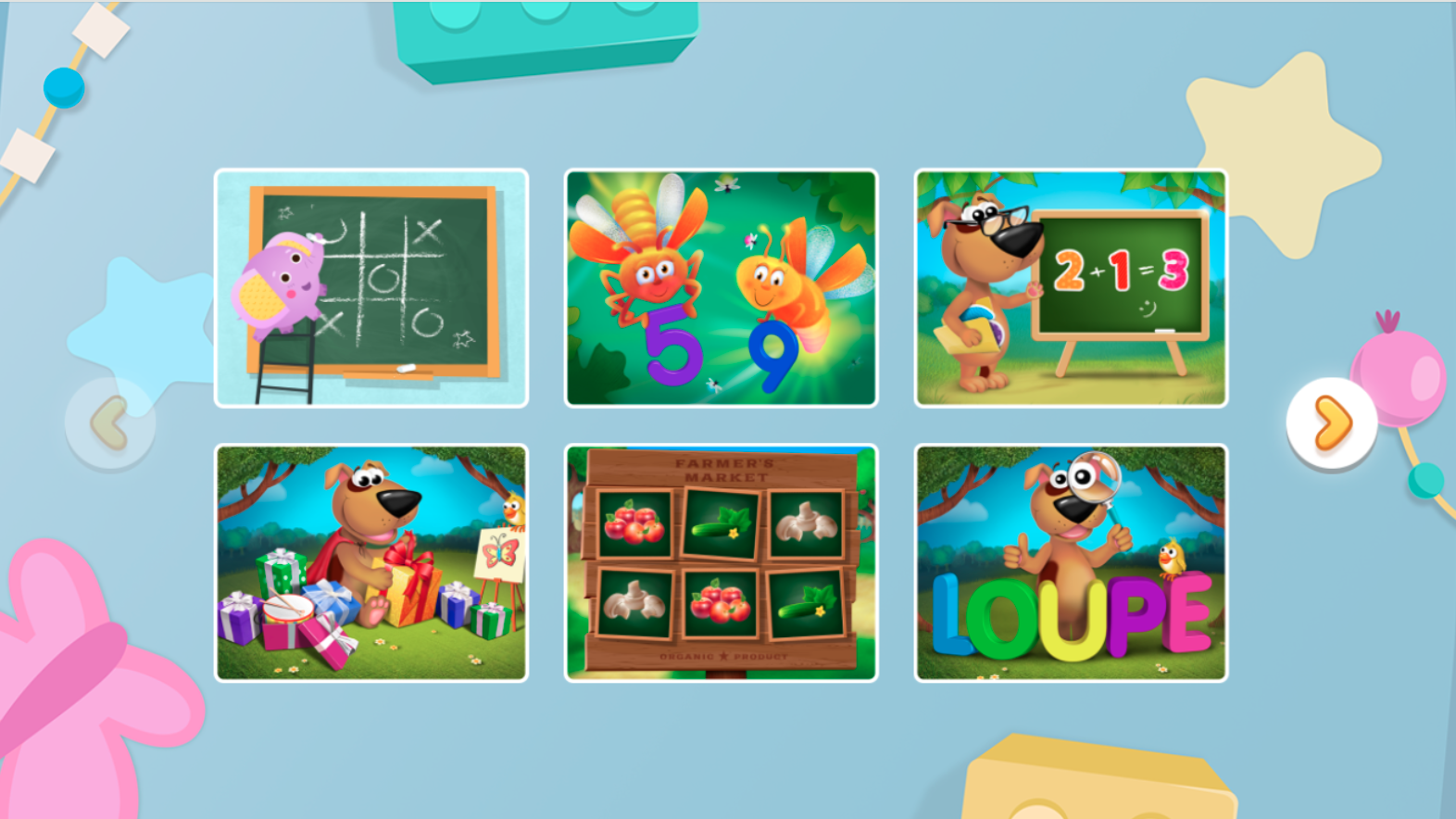Number Sequencing Addition & Subtraction Worksheets for Ages 7-8
15 filtered results
-
From - To
Enhance your child's math skills with our Number Sequencing Addition & Subtraction Worksheets, designed specifically for ages 7-8. These engaging worksheets provide a fun and interactive way to learn essential sequencing concepts while reinforcing addition and subtraction skills. By guiding young learners through various exercises, your child will practice identifying number patterns, solving equations, and mastering basic math operations with ease. Featuring colorful graphics and age-appropriate challenges, our worksheets not only foster problem-solving abilities but also promote critical thinking. Give your child the confidence they need in math while making learning enjoyable—explore our collection today for a brighter mathematical future!
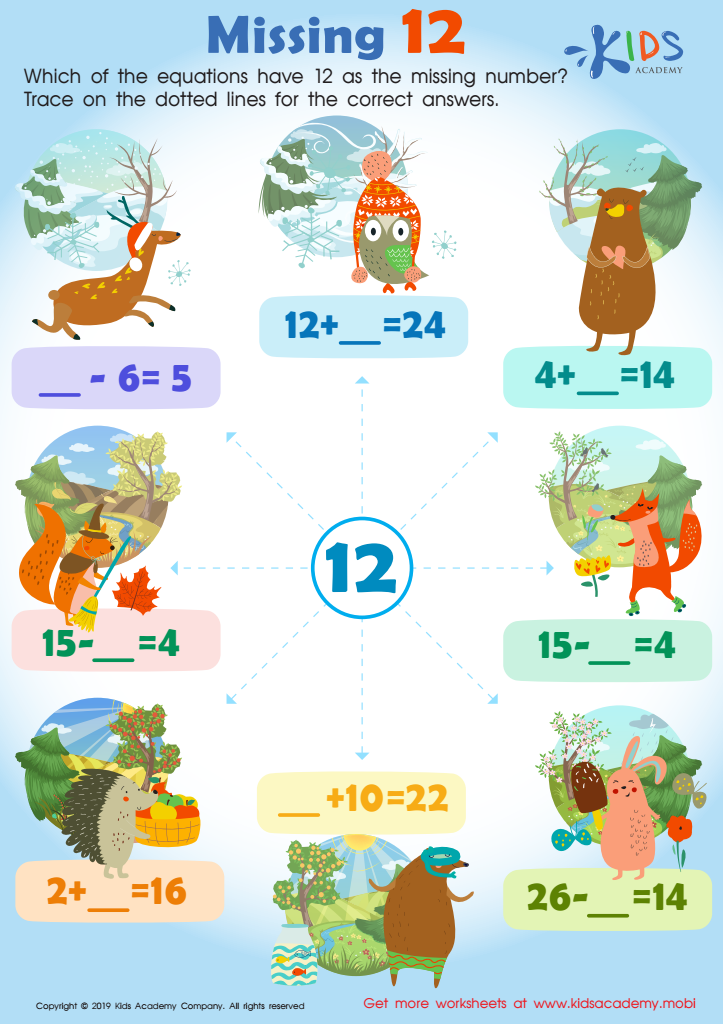

Missing 12 Worksheet
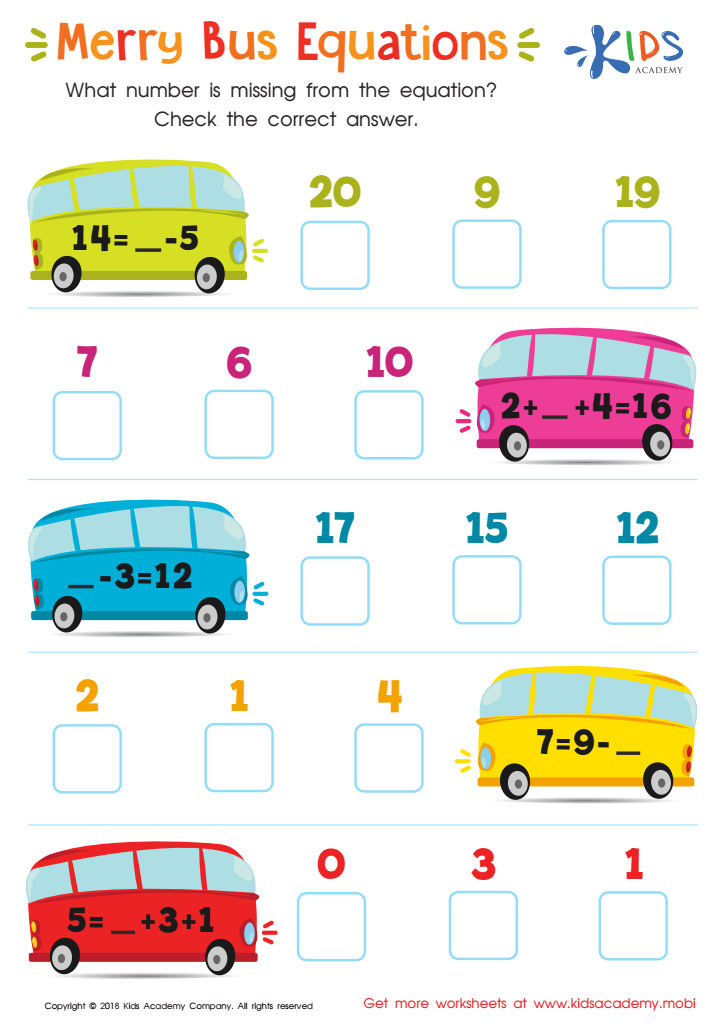

Merry Bus Equations Worksheet


Addition: Space Math Worksheet
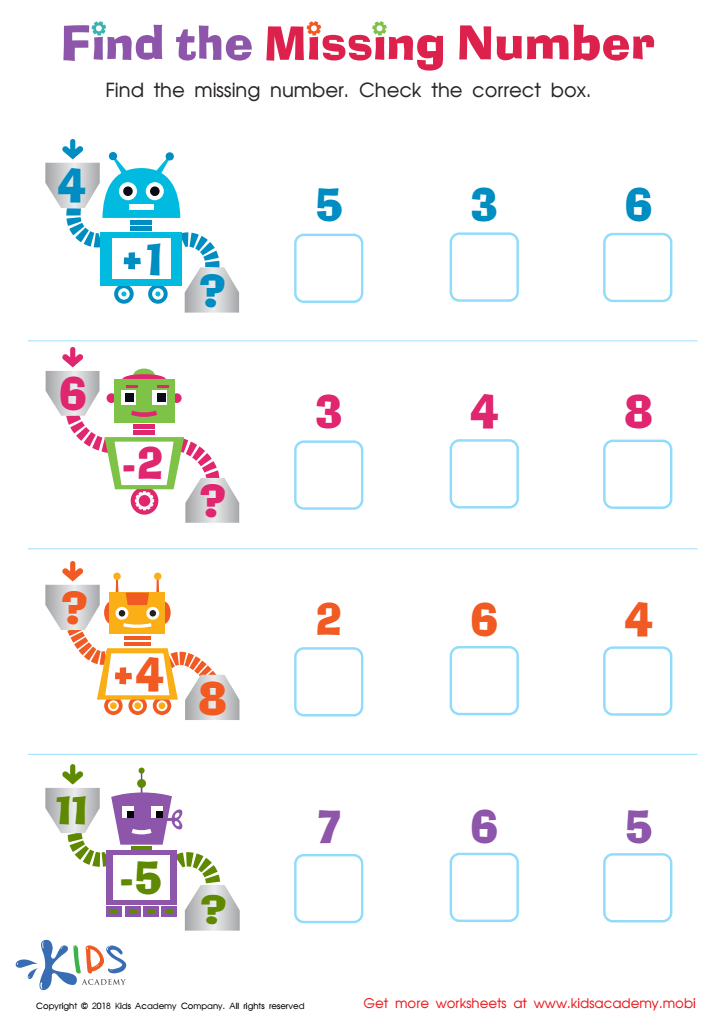

Find the Missing Number Worksheet


Space Mission Math Worksheet
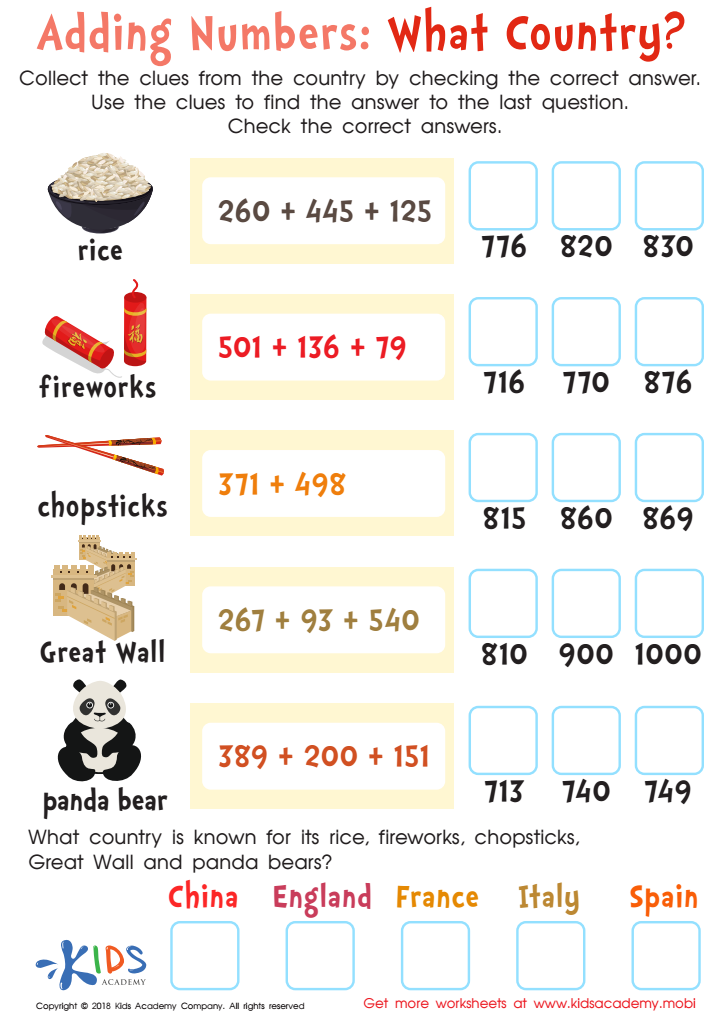

Adding Numbers: What Country Worksheet
Number sequencing in addition and subtraction is a fundamental skill for children aged 7-8 that lays the groundwork for their mathematical understanding. At this age, students transition from basic arithmetic to more complex problem-solving and reasoning skills. Mastering sequencing helps children develop a deeper comprehension of number relationships, making it easier for them to grasp concepts such as place value, patterns, and operations.
Parents and teachers should care because these skills directly impact a child's academic success and confidence in math. Proficient number sequencing enhances a child’s ability to tackle word problems and build strategies for mental arithmetic, which are crucial for higher-level math. Additionally, understanding patterns in numbers can support opportunities for learning in other areas (such as science or even everyday life), fostering a well-rounded educational experience.
Moreover, promoting number sequencing can boost students' confidence and motivation. When children can identify patterns and sequences, they are more likely to engage with math enthusiastically and view it as an enjoyable challenge rather than a daunting task. Support in this area helps children build a positive mindset towards learning, resilience in overcoming challenges, and the foundations for future mathematical concepts. Therefore, nurturing these skills should be a priority for both parents and educators.
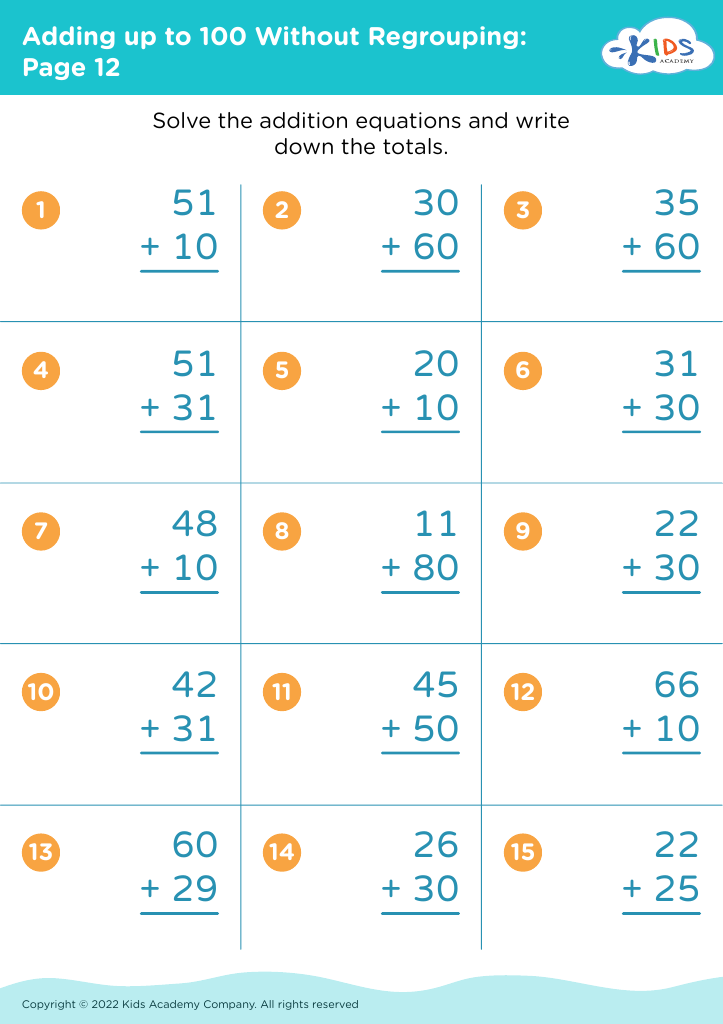
 Assign to My Students
Assign to My Students
